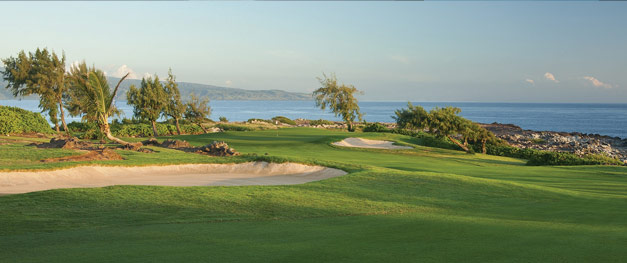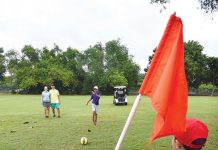Story by Lehia Apana

In golf, green is the putter’s playground, the colors that carpet the course, and the professional’s paycheck. For environmentalists, it’s a mission to protect the world’s dwindling natural resources.
It may appear the two sides are at opposing ends of the ecological spectrum — thirsty greens versus water conservation, lush fairways versus concerns over harsh chemicals — but Maui courses are working to change what green really means.
Nowhere is this spirit of cooperation more thriving than at Kapalua Resort’s two championship courses, the Bay and the Plantation.
Birdies Welcome
In 1993, the Bay Course became the nation’s first golf course certified by Audubon International as an Audubon Cooperative Sanctuary. In 1994, the Plantation Course followed suit. Achieving this honor meant passing stringent standards for water use, fertilizer and pesticides, and overall efficiency, a process Kapalua is required to repeat every two years for recertification.
“It’s rigorous,” says Mike Jones, Kapalua’s director of golf. “But we live on an island in the middle of the Pacific, so we want to make sure we do the right thing.”
Combining aesthetics with environmentalism is a tricky balancing act. Golfers expect impeccable lawns, which are generally achieved through heavy reliance on pesticides. Kapalua, however, uses a pest-management program that spot treats only when necessary, and most of its fertilizers are 75 to 100 percent organic.
At Kapalua, green waste isn’t waste at all. It’s transformed into compost to enrich the soil at the resort’s Kapalua Farms, an organic farm that supplies produce to local restaurants. Here, sustainability is kicked up a notch, creating a course-to-farm-to-table experience.
No Drop Left Behind
Kapalua’s water comes from Puu Kukui Watershed Preserve, an 8,304-acre conservation site established by the resort and situated along the West Maui Mountains. To be conservative in its use of the estimated 360 inches of rainfall from Puu Kukui and other landholdings, Kapalua installed a Rain Bird irrigation system that tracks local weather and shuts off sprinklers when it rains.
Follow the water trail to Kapalua’s maintenance facility, where a filtration system and an underground oil separation tank clean the water before it runs into the ocean. In addition, Kapalua cleans its golf equipment with wash pads that separate toxic and solid material. The water is then repurposed throughout the resort.
Establishing these green initiatives didn’t come easily – or cheaply. But Kapalua is taking the long view.
“In the beginning, some things were expensive, but in the long run it’s all self-sustainable,” Jones says. “It’s our community responsibility to be stewards of this area.”





